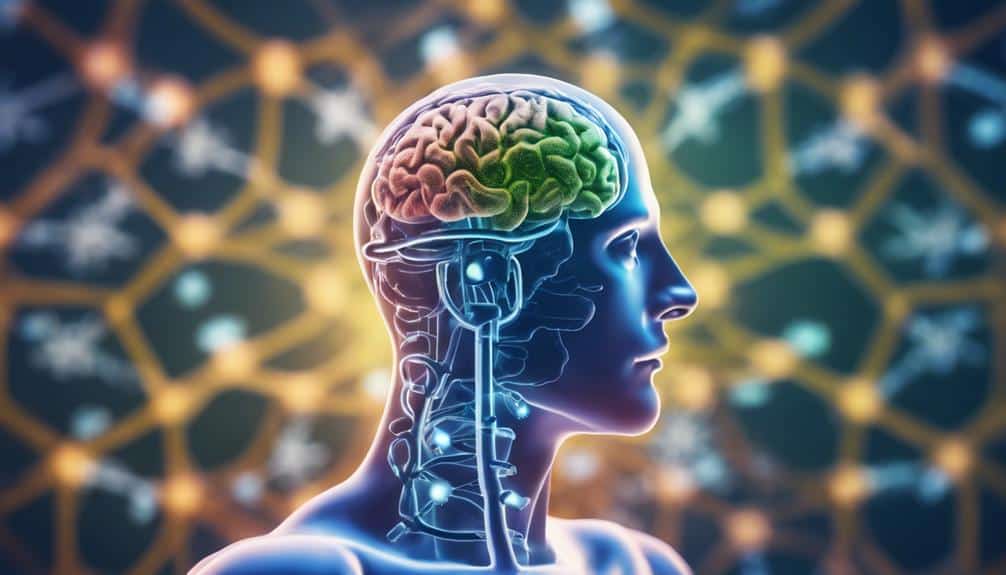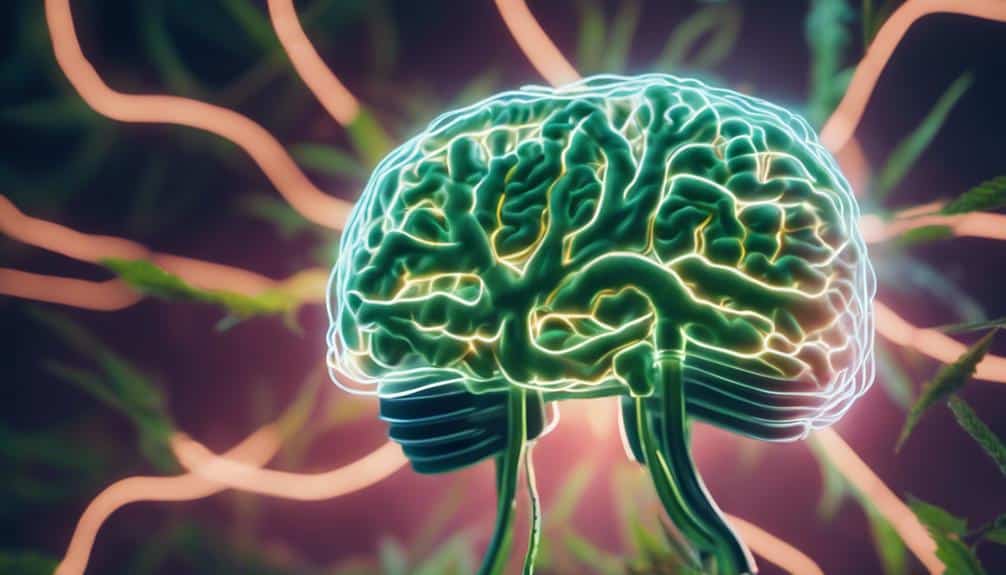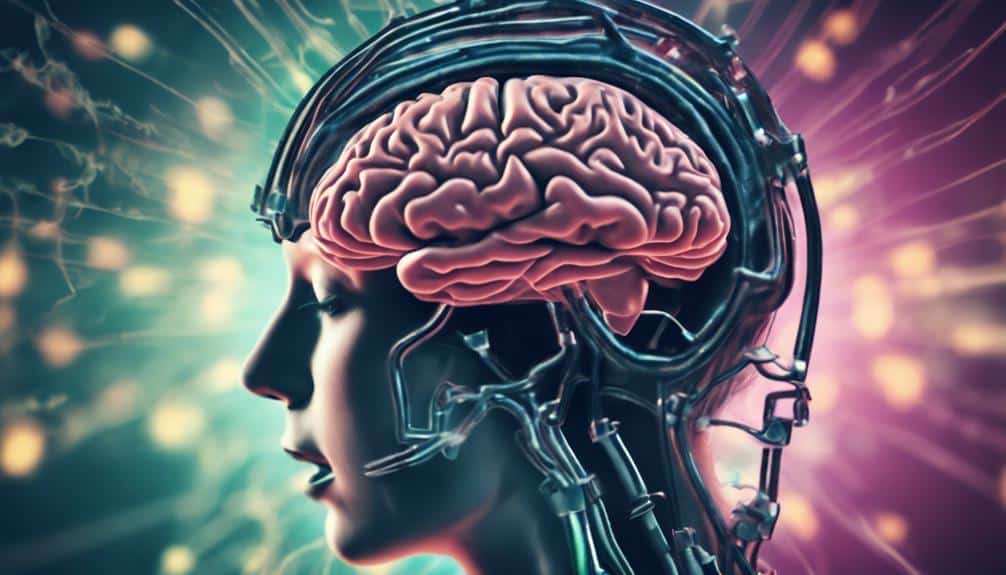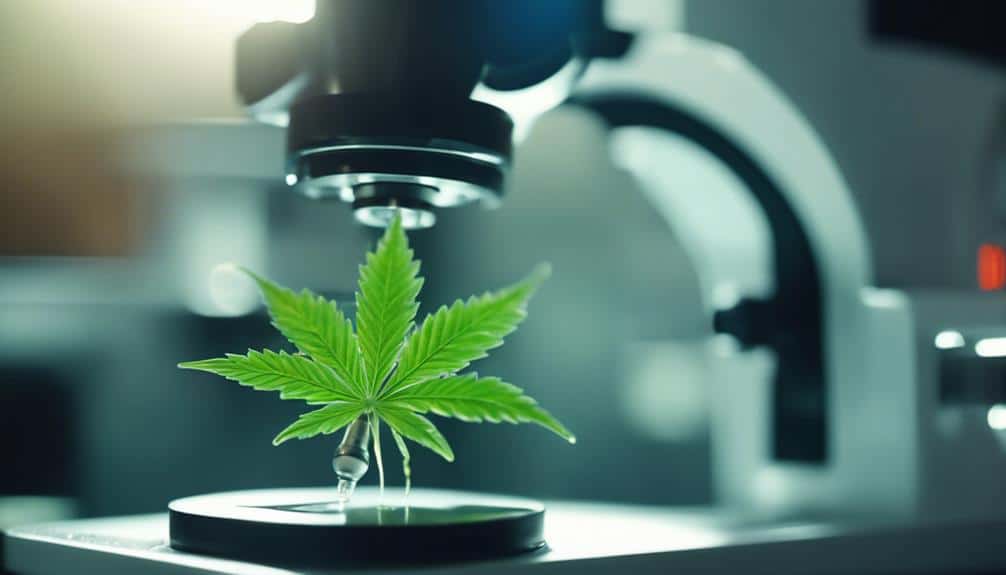You’ve probably heard about the use of medical marijuana in treating various health conditions, but did you know it’s also showing promise in the realm of neurological disorders? The secret lies in the interaction of cannabinoids, like CBD and THC, with your body’s own endocannabinoid system. From modulating pain perception to potentially offering neuroprotection, the applications are intriguing. But how exactly does it work, and what are the implications for conditions like Alzheimer’s, Parkinson’s, and epilepsy? Let’s take a closer look at this compelling topic.
Understanding Neurological Disorders

To comprehend the potential benefits of medical marijuana for neurological disorders, it’s essential to first understand what these complex conditions entail and how they impact your nervous system. Neurological disorders are diseases of the brain, spine and the nerves that connect them. They range from Parkinson’s disease and multiple sclerosis to epilepsy and stroke.
Brain connectivity is crucial in understanding these disorders. It refers to the connections and communication pathways between different areas of the brain. With disrupted or abnormal connectivity, neurological disorders can develop. For instance, in Alzheimer’s disease, connectivity between the hippocampus and other brain regions is often impaired leading to memory loss and cognitive decline.
Meanwhile genetic factors play a significant role in many neurological problems’ development. Specific gene mutations can predispose you to conditions like Huntington’s disease or amyotrophic lateral sclerosis (ALS). While not all neurological disorders are inherited, understanding the genetic links can help in early detection, prevention, and personalized treatment plans.
In serving others, it’s important to understand these factors as they provide a basis for how medical interventions, including potentially medical marijuana, might be utilized effectively. Stay tuned for our next subtopic: an overview of medical marijuana.
Overview of Medical Marijuana
Delving into the world of medical marijuana, it’s crucial to understand that this plant has been used for centuries due to its potential therapeutic properties. Especially its active components known as cannabinoids are thought to provide relief for a wide array of symptoms including those associated with some neurological disorders.
Historical usage spans various cultures and continents. Their understanding of cannabis’s medicinal properties albeit limited underscored its importance in treating a variety of ailments. Today advancements in science and medicine have shed light on how cannabinoids interact with our bodies reinforcing their potential.
Legal implications however present a significant hurdle. Despite growing acceptance marijuana remains classified as a Schedule I drug under federal law in many jurisdictions implying high potential for abuse and no accepted medical use. This classification has stifled extensive research limiting comprehensive understanding of marijuana’s full therapeutic potential.
Understanding the history and legal challenges of medical marijuana isn’t just academic. It’s a necessary step in advocating for policies that better serve patients’ needs. By appreciating the plant’s historical use and recognizing the legal barriers you’re better equipped to navigate this complex landscape.
The Endocannabinoid System Explained

Unraveling the mysteries of medical marijuana, it’s essential you grasp the intricacies of the endocannabinoid system. This complex cell-signaling system in our bodies plays a crucial role in maintaining physiological homeostasis and is heavily influenced by cannabinoids.
To understand its function, consider these key components:
- Endocannabinoid production: Your body produces endocannabinoids similar to the cannabinoids found in marijuana. They’re instrumental in regulating sleep, mood, appetite, and other crucial functions.
- Receptor functionality: Endocannabinoids bind to receptors in your body’s cells. The two primary types CB1 and CB2 are found in different areas and serve unique functions.
- Enzymes: After endocannabinoids have served their purpose enzymes break them down.
Research indicates that a well-functioning endocannabinoid system promotes health and well-being. However when it’s out of balance it can contribute to various health issues. Studies have shown that manipulating the endocannabinoid system by introducing external cannabinoids like those in medical marijuana can help restore balance and alleviate symptoms. It’s a promising field and with continued research we could better understand how to harness the therapeutic potential of cannabinoids for neurological disorders.
CBD and THC: Key Components
Now let’s turn our attention to CBD and THC, the two key components of medical marijuana that have significant therapeutic potential.
CBD or cannabidiol is a non-psychoactive compound that has been found to have analgesic anti-inflammatory and anti-anxiety properties. It’s likely that you’ve heard about its potential benefits for a range of neurological disorders.
On the other hand THC or tetrahydrocannabinol is the psychoactive component in cannabis that can induce a ‘high’. However it’s important to note that THC also has therapeutic properties particularly in pain relief and reducing nausea.
Cannabis cultivation plays a crucial role in the levels of these components. Through selective breeding it’s possible to cultivate strains with varying levels of CBD and THC. This strains differentiation allows for targeted treatment options. For instance a strain high in CBD and low in THC may be ideal for treating certain neurological disorders without the ‘high’ often associated with marijuana use.
In a nutshell, the therapeutic potential of medical marijuana lies largely in the properties of CBD and THC. Understanding their roles and their relationship with cannabis cultivation and strains differentiation is key to harnessing their potential.
Medical Marijuana and Pain Management

When it comes to managing pain, medical marijuana’s potential efficacy can’t be overlooked as numerous studies have shown promising results in pain reduction particularly in patients suffering from chronic neurological disorders.
Here’s how medical marijuana can play a role in pain management:
- It can manipulate pain perception: The cannabinoids in medical marijuana interact with receptors in the brain that alter the perception of pain making it more manageable.
- It offers opioid alternatives: Medical marijuana provides a safer alternative to opioids which carry a high risk of addiction and overdose.
- It can reduce inflammation: Chronic inflammation often associated with neurological disorders can be mitigated by the anti-inflammatory properties of certain cannabinoids.
Medical marijuana’s role in pain management isn’t just about alleviating physical discomfort. It’s also about improving the quality of life for patients reducing their dependence on potentially harmful opioids and offering a more holistic approach to their overall health care. However it’s important to have a thorough discussion with a medical professional before incorporating it into your pain management regimen.
Impact on Neurodegenerative Disorders
Beyond its role in managing pain, medical marijuana may also have significant implications for the treatment of neurodegenerative disorders. This potential comes largely from the role of cannabinoid receptors in our brains. These receptors primarily CB1 and CB2 interact with cannabinoids found in marijuana leading to various therapeutic effects.
Studies suggest that activation of CB1 receptors may offer neuroprotection possibilities. In Alzheimer’s Disease, for example, cannabinoids can reduce inflammation and the accumulation of toxic proteins potentially slowing disease progression. In Parkinson’s Disease, cannabinoids may protect neurons by reducing oxidative stress.
On the other hand, the role of CB2 receptors is less clear. Some studies show benefits in slowing neurodegeneration while others suggest potential risks. Therefore more research is needed to understand the complex role these receptors play.
It’s important to remember that these are early findings. While promising they don’t yet provide a clear path to treatment. However you can’t deny the potential of medical marijuana in combating neurodegenerative disorders. As research progresses we may find more concrete ways in which cannabinoids can help those suffering from these debilitating diseases.
Treating Epilepsy With Cannabis

Delving into the realm of epilepsy treatment, it’s noteworthy that cannabis specifically the non-psychoactive compound cannabidiol (CBD) has shown significant promise in reducing seizure frequency and severity. Research indicates CBD’s potential role in neuroprotection and controlling excitatory neurotransmission both critical factors in managing epilepsy.
Consider the following when thinking about cannabis as an epilepsy treatment:
- Cannabis Strain Selection: Not every strain of cannabis will yield the desired therapeutic effects. It’s crucial to select ones rich in CBD and low in THC, the psychoactive compound.
- Dosage and Administration: CBD’s efficacy is dose-dependent. It’s important to start with a low dose then gradually increase until you achieve desired seizure control.
- Pediatric Use Debate: While CBD has shown promise in treating pediatric epilepsy it’s crucial to weigh the benefits against the potential risks considering the ongoing debate and research in this area.
Potential Side Effects and Risks
While considering medical marijuana for neurological disorders it’s essential to be aware of the potential side effects and risks associated with its use.
Foremost among these are mental health implications. Research indicates that prolonged use of cannabis can exacerbate existing mental health conditions such as anxiety and depression. In some cases it may even trigger new onset psychosis particularly in individuals with a genetic predisposition. This is because THC, the psychoactive component of cannabis can alter brain normal functioning leading to these adverse effects.
Dependency concerns are another significant risk to consider. Long-term use of medical marijuana can lead to physical and psychological dependency akin to other substances like alcohol and nicotine. This dependency can result in withdrawal symptoms when marijuana use is discontinued including irritability insomnia and loss of appetite.
To mitigate these risks it’s crucial to use medical marijuana under the careful supervision of a healthcare provider. Regular monitoring can help identify any adverse effects early and adjust the treatment plan accordingly. This approach ensures that the benefits of medical marijuana for neurological disorders are maximized while minimizing potential risks.
Future Research and Developments

Despite the potential risks, it’s also important to recognize the promising future of medical marijuana in treating neurological disorders as ongoing research and developments can shed more light on its efficacy and safety.
Future research is focused on:
- Clinical trials progress which will provide more conclusive evidence on the therapeutic benefits of medical marijuana for various neurological conditions.
- Cannabinoid synthesis advancements enhancing capacity to produce cannabinoids in optimal quantities and combinations tailored for specific disorders.
- The development of safer and more effective delivery methods minimizing adverse side effects while maximizing therapeutic effects.
You should be aware that clinical trials are in progress exploring the full therapeutic potential of medical marijuana in treating neurological disorders. With advancements in cannabinoid synthesis we’re edging closer to delivering optimal benefits to patients. The ultimate goal is to refine the formulation and delivery of medical marijuana to ensure it’s as effective and safe as possible.
In essence, the landscape of medical marijuana in the treatment of neurological disorders is continually evolving. As we learn more we can better serve those who need it most offering hope for a future where their symptoms are more effectively managed.
Conclusion
You’ve seen how medical marijuana interacts with our body’s endocannabinoid system potentially offering relief for neurological disorders. Remember a study showed that 84% of patients reported improvement with cannabis treatment for epilepsy. However it’s not without potential risks. As research progresses we’ll gain a clearer understanding of how to harness its therapeutic potential effectively and safely.
I invite you to explore this fascinating world of medical marijuana with us at Fells Point Cannabis Docs of Maryland. We’re here to guide you through this evolving science and help you understand it better. Don’t hesitate to give us a call or pay us a visit. We’re always eager to share our knowledge and answer any questions you might have. Until then let’s stay tuned into the unfolding science of medical marijuana together.
